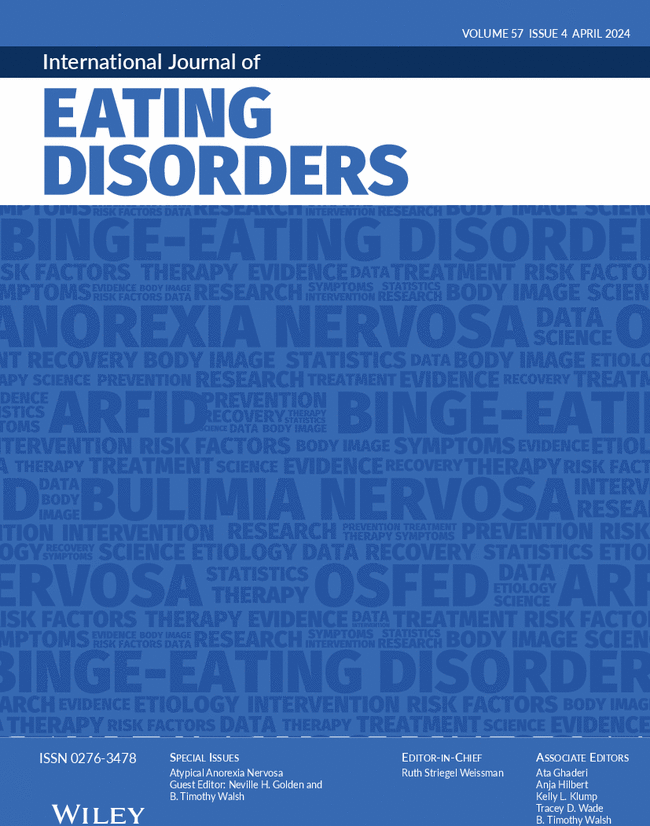Randomized Controlled Trial of Weight Management Versus Weight Management With Concurrent Cognitive-Behavioral Therapy for Binge-Eating Disorder in US Veterans With High Weight
Abstract
Objective
To determine the effectiveness of adding a brief psychological eating-disorder treatment (CBT) to weight management for addressing DSM-5 binge-eating disorder (BED) in US military Veterans with high weight.
Method
One hundred and nine Veterans, with DSM-5 BED, seeking weight management services were randomly assigned to VA's Weight Management Program (MOVE!), or MOVE! plus a brief, clinician-led cognitive-behavioral therapy (MOVE! + CBT). Primary (eating disorder psychopathology and binge eating), secondary (mental health, quality of life, and eating- and appearance-related), and exploratory (weight) outcomes were analyzed with mixed-effects models for four timepoints (baseline, 3-month [post-treatment], and 9- and 15-month follow-ups).
Results
MOVE! + CBT reported significantly less overall eating disorder psychopathology compared to MOVE! at all post-randomization timepoints: difference at 3 months −0.18 (−0.3, −0.06, p = 0.003), 9 months −0.15 (−0.3, 0, p = 0.05), and 15 months −0.27 (−0.42, −0.12, p < 0.001). There were no differences between groups in binge-eating frequency. MOVE! + CBT remission rates were 28% at 3 months, 42% at 9 months, and 27% at 15 months. MOVE! remission rates were 22% at 3 months, 26% at 9 months, and 20% at 15 months. MOVE! + CBT was superior at post-treatment through 15 months on eating-, weight-, and shape-related (p's < 0.05), but few other, secondary outcomes. A 5% weight loss ranged from 26% to 38% for MOVE! + CBT, and 17% to 33% for MOVE!.
Discussion
Weight management alone and with concurrent CBT resulted in significant improvements in BED. The addition of CBT enhanced some specific outcomes but not weight loss. Findings provide evidence-based clinical guidance and population-level impact for addressing BED in the context of high weight, especially among Veteran populations.
Trial Registration: Clinical Trial Registry Number: NCT03234881(Weight Loss Treatment for Veterans with Binge Eating)

 求助内容:
求助内容: 应助结果提醒方式:
应助结果提醒方式:


